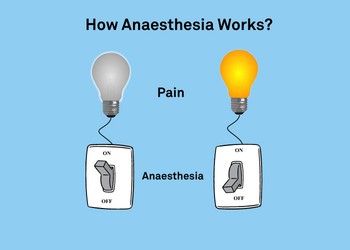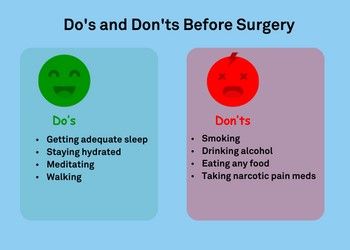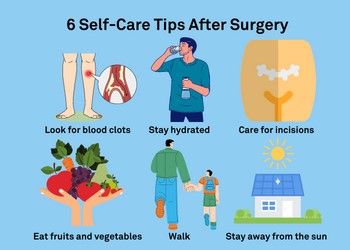General Health
How Does Anaesthesia Work?
9 min read
By Apollo 24|7, Published on - 14 November 2022, Updated on - 31 January 2024
Share this article
0
107 likes

Painless Piles Surgery, Painless Tooth Extraction, Painless Uterus Removal- you would have often heard these words and wondered, Painless? Really? How?
After all, even the mere mention of the word surgery sends a chill down the spine. Then how could a procedure involving cuts and stitches be hailed painless?
Well, this is primarily because of anaesthesia. Modern-day anaesthesia is a highly advanced combination drug which, when given in just the right amount, slowly numbs your body, absolving you from any experience or memory of pain whatsoever during the surgery.
Physiology of Pain- How Does the Brain Detect Pain?
The physiology of pain can well be understood through the simplest example of an electric channel in your house. Just like all the lights, fans, and other electric appliances work via the current supplied to them through the current distribution box (DB), your organs work the way they do because of the instructions supplied to them through the brain.
The only difference is that while the house appliances get their electric supply through the wire bundle, your organs receive this signal through an integrated nervous system.
Much like how the bulb lights up only after you switch on a certain point and complete the current circuit, your brain understands and reacts to the pain only when the neurons transmit the received sensations to the brain and bring back the instruction manual on the respective response.
But what if you cut the wire reaching the bulb? The electric circuit would break down and no matter how many times you switch ‘on’ or ‘off’, the bulb won't light up. Right?
Similar is the effect of anaesthesia. It blocks your neurons from transmitting the pain signals by creating an electrical barricade.

To put it in the language of science, within seconds of insertion, spray or inhalation, the anaesthetics bind with the GABA receptors in the nervous system. Upon binding they trigger the GABA receptor -a ligand-gated chloride channel to open and allow chloride ions to flow into the neuron, making the cell hyper-polarised and less likely to fire. This locked jam hence acts as a local, regional or complete barricade halting the transmission of pain signals to the brain.
With no transmission, no matter how many cuts or stitches, your body does not feel the pain at all, making the most complex of procedures- painless.
Types of Anaesthesia and How Do They Work?
From sipping the milk of poppy to sniffing chloroform, the history of anaesthesia has had it all and come a long way. Modern-day anaesthesia is a highly refined cocktail of multiple chemicals. It not only makes your body numb, but also offers you a choice on how, where, and for how long. That is, the electrical barricade mentioned above can now be created however and wherever you want.
New-age anaesthetics are broadly divided into three types- local, regional, and general. When created at the direct site, that is, in a small local area, it is called local anaesthesia and when created to block a larger region, it's called regional anaesthesia. Both block pain signals only in the set targeted area while keeping you awake and aware of the whole procedure.
In comparison, the third type- general anaesthesia is slightly more different and complex. It numbs the entire body and induces a sleep-like condition where you neither experience pain nor retain any memory of the surgical procedure.
With their individual pros and cons, each has a different use and is preferred over the other based on the body part to be operated on, the complexity of the procedure, the time taken, and sometimes, the patient's personal preferences.
Read on to know more in detail.
1. Local Anaesthesia
As the name suggests, local anaesthesia is used to numb only a specific, local portion of the body. It can be given as a shot, spray, or ointment. Within seconds of application, electrical barricade forms on the targeted region and the respective neurons stop firing the pain signals to the brain. As a result, the specific region loses all sensation while you remain perfectly conscious to talk or move along with your doctor.
Local anaesthesia is particularly recommended for procedures which are quick, simple and require no incision. For example, stitching a deep wound, taking a biopsy, minor ophthalmic procedures such as LASIK and cataracts, or dental procedures such as root canal extraction, cavity fillings or more.
They are great for short procedures, safe in nature, require no major preparation and carry no substantial side effects.
2. Regional Anaesthesia
Much like local anaesthesia, regional anaesthesia too blocks pain by numbing a specific part of your body while keeping you awake during the procedure. The only difference is, unlike local anaesthesia, this is used to block pain in a larger region such as a full hand, a leg or the complete upper or lower body. For the same reason, it is given at the specialised site of nerve bundles. For example, the nerve bundle at the shoulder joint blocks pain signals in the full hand, or the nerve bundle in the spinal cord blocks pain signals in the upper or lower body.
Depending on the mode of administration, it can be further sub-divided into two types-
- Spinal Anesthesia: This is given directly as a single dose of anaesthetic medicine into the spinal cord and is particularly recommended in surgeries of the lower abdominal, pelvic, rectal or other lower body regions. Examples of such include- orthopaedic surgeries, genital surgeries, procedures of the urinary tract, rectal, and more.
- Epidural anaesthesia- Epidural anaesthesia is very similar to spinal anaesthesia. However, a catheter is used to slowly inject medicines into the spinal column. This is widely used during labour pains and C-sections. It may are also be used in case the doctor needs to perform specific abdominal surgeries which may require a slow infusion of anaesthetic medications.
Both forms are safe and great for slightly complex surgical procedures. However, as a preventive measure, you must stop eating at least 8 hours before the procedure and halt smoking or drinking. Consumption of the same can trigger adverse effects on your system.
People who smoke may need more anaesthesia than non-smokers!
3. General Anesthesia
Unlike local or regional anaesthesia, general anaesthesia is slightly different and more complex. It not only numbs a certain body part, but the entire body as a whole, and puts you in a sleep-like state where you neither experience pain nor register any memory of it.
For the same reason, the electrical barricade in general anaesthesia is not created only at the operational site, but directly in the brain through the central nervous system. It can hence be given only either intravenously or through inhalation.
Within minutes of administration, you’ll feel your body slow down and experience a sleep-like condition. That is, while your body will continue to perform all the major operational functions such as breathing, the beating of the heart, circulation of the blood, etc, it would no longer register any pain or memory of the surgery.
Owing to its miraculous potential and precision, general anaesthesia is one of the most widely used forms of anaesthetics. It is used in all major and complex surgical procedures including hip replacement, knee replacement, heart surgeries, open hernia surgeries, uterus removal, cancer surgeries, and more.
How to Prepare For Anaesthesia Before Surgery?
With advantages come responsibilities. As much as anaesthesia makes the surgery painless, it comes with its own sets of instructions and complexities. Therefore, you must ensure that your anesthesiologist is a seasoned practitioner and that you follow all your doctor’s instructions super carefully. Here are a few instructions to ensure a safe surgery-
- Stop eating at least 8 hours before the surgery. Having food before the procedure can make you vomit or bring up the food in your throat. Since your body is still sedated, there is a chance that this may get into your lungs and clog your breathing or cause intense infection or damage.
? DidYouKnow
If your stomach has food and drink, you may vomit or choke during the surgery. If this happens, food can sneak into your lungs and harm them.
- Take your medications only after clear approval from your doctor. Non-prescribed medications may bring congesting effects and affect the procedure negatively.
- Do not take alcohol or any other drugs 72 hours prior to anaesthesia administration. They not only deter the surgery, but also recovery post-operation.
- Don't forget to rest adequately. It would help you stay calm and moderate any unwitting anxiety.
Do inform your doctor if you are experiencing hyperactivity before the commencement of any procedure. Your doctor can help you channel through any anxiety or hyperactivity and make the process more relaxed.

How to Speed Up Recovery from Anaesthesia?
Nothing is as important in a treatment as its recovery. Here are a few steps to ensure you recover smoothly and swiftly post anesthesia-
- Check whether there is ventilation and you can inhale effortlessly.
- Slowly get out of bed (if you are allowed) to check whether you are able to walk and balance.
? DidYouKnow
Walking increases the amount of oxygen in your blood, which speeds up the healing process.
- Remember to hydrate yourself. This will help anaesthetic medications to flush out from the body.
- Eat plenty of fruits and vegetables to heal faster.
- Don't forget to rest adequately.
- Inform your doctor if you are experiencing fainting post 2-3 days of the surgery.

Key Takeaway
The word surgery almost always triggers a panic. It's like a ticking bomb where you are constantly worried about its effectiveness, result, recovery, and most importantly—pain. But the truth is: The disease is painful, the treatment is not.
In fact, modern-day surgeries are way quicker, effective, and painless! They enable you to live a better, happier, and pain-free life with full-range mobility and peace.
If you’re still restless, let us take you back to a joke that goes around in medical colleges- Be nice to an anesthesiologist. They literally knock people out for a living!
So, may be, laugh a little and then remember: “that precision” is exactly what makes modern-day surgeries painless! After all, there is nothing that a little humour and some science can’t fix.
Have more questions?
Our doctors are available for both online and in-clinic consultations.
Medically Reviewed by Dr. Dhanunjay Reddy B
General Health
Consult Top General Surgeons
View AllLeave Comment
Recommended for you

General Health
Is A 5-Minute Walk Every 30 Minutes Good For Your Body?
Long hours of sitting can negatively affect our bodies in many ways. Even stretching or walking for 5 minutes every 30 minutes can counterbalance the ill effects of long hours of sitting.

General Health
Loud Snoring: Is It Normal Or A Sign Of Sleep Apnoea?
Sleep apnoea is a potentially fatal condition that can cause sudden breathing obstruction during sleep. This article addresses the signs and treatment options of this serious condition.

General Health
Irregular Periods? These Hormone Tests Can Help: A Complete Guide for Women Aged 18–35
Experiencing irregular periods between 18-35? Discover which hormone tests can pinpoint the cause. Our complete guide helps you understand results & find solutions for menstrual irregularities.
Subscribe
Sign up for our free Health Library Daily Newsletter
Get doctor-approved health tips, news, and more.
Visual Stories

Science-backed Home Remedies for Burns and Blisters
Tap to continue exploring
Recommended for you

General Health
Is A 5-Minute Walk Every 30 Minutes Good For Your Body?
Long hours of sitting can negatively affect our bodies in many ways. Even stretching or walking for 5 minutes every 30 minutes can counterbalance the ill effects of long hours of sitting.

General Health
Loud Snoring: Is It Normal Or A Sign Of Sleep Apnoea?
Sleep apnoea is a potentially fatal condition that can cause sudden breathing obstruction during sleep. This article addresses the signs and treatment options of this serious condition.

General Health
Irregular Periods? These Hormone Tests Can Help: A Complete Guide for Women Aged 18–35
Experiencing irregular periods between 18-35? Discover which hormone tests can pinpoint the cause. Our complete guide helps you understand results & find solutions for menstrual irregularities.
